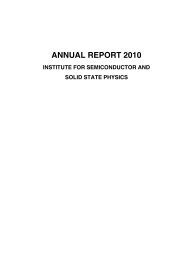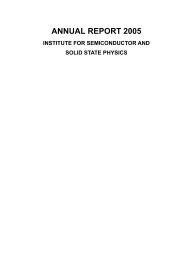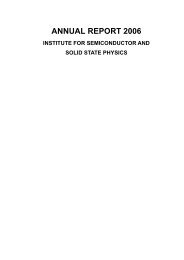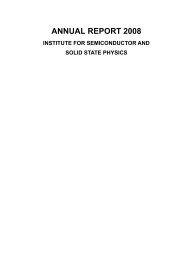Kinetic and Strain-Induced Self-Organization of SiGe ...
Kinetic and Strain-Induced Self-Organization of SiGe ...
Kinetic and Strain-Induced Self-Organization of SiGe ...
Create successful ePaper yourself
Turn your PDF publications into a flip-book with our unique Google optimized e-Paper software.
34 CHAPTER 3. METHODS OF INVESTIGATION<br />
Figure 3.2: Schematic view <strong>of</strong> hardware components <strong>and</strong> signal pathways in noncontact<br />
(NC) AFM-mode [81].<br />
� Source: AFM schematic-principle.jpg<br />
resolution is usually limited to the step size according to the number <strong>of</strong> image data points<br />
(e.g. 512 × 512) [82]. [74]<br />
3.3.3 Imaging Artifacts<br />
Atomic force microscope images are among the easiest-to-interpret <strong>of</strong> all images generated<br />
by any microscopy technique. With these 3-dimensional AFM images it is easy to determine<br />
whether a feature is protruding from the surface or recessed into it [74].<br />
Tip Convolution<br />
In scanning probe microscopy most imaging artifacts arise from the tip imaging, i.e. the<br />
imaging <strong>of</strong> the convolution <strong>of</strong> the sample surface <strong>and</strong> the tip. As the tips are not ideal,<br />
in case <strong>of</strong> features that are sharper than the tip, the image is dominated by the shape <strong>of</strong><br />
the tip, rather than by the true edge pr<strong>of</strong>ile <strong>of</strong> the structure. In Fig. 3.3 the origin <strong>of</strong> tip<br />
convolution is demonstrated. Many samples have features with steep sides <strong>and</strong> therefore tip<br />
imaging is a common occurrence in images. As a consequence, sidewall angles should be<br />
measured routinely in order to check, whether the imaged slope is limited to the shape <strong>of</strong> the











